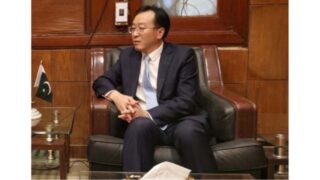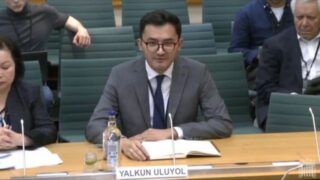Under personal instructions from Xi Jinping, Uyghurs continue to be victims of forced “labor transfers” inside and outside Xinjiang. The aim is not economic only.
by Massimo Introvigne


“Bitter Winter” is often caught in social media controversies where naïve netizens or, more often, CCP trolls argue that all is well in Xinjiang and that Uyghurs are coercively moved to other provinces for forced labor is something that might have happened in isolated incidents in the past but is no longer happening now.
A new report has now been published, which documents that Uyghur forced labor is increasing rather than decreasing. It will not persuade the trolls but perhaps will raise some doubts in the minds of the naïve fellow travelers.
Researcher extraordinaire Adrian Zenz’s new report is about “Forced Labor in the Xinjiang Uyghur Autonomous Region: Assessing the Continuation of Coercive Labor Transfers in 2023 and Early 2024.” Quoting mostly documents from the CCP itself, Zenz reports that in 2023 the authorities set a goal of increasing transfer of Uyghur workers to other provinces by 38%. As it often happens in China if bureaucrats want to avoid the risk of being demoted or worse, the quota was not only achieved but exceeded.
“Labor transfer” is a label covering two different Xinjiang realities. It indicates both the forced transfer of workers from agriculture and other jobs they had freely chosen to mandatory factory work. This includes work at factories by Uyghurs detained in “transformation through education” camps, renamed in official documents “Vocational Skills Education and Training Centers.” From there, inmates are bussed to the forced workplaces. The second reality is the “Poverty Alleviation” through “Pairing Assistance” connecting Xinjiang to other regions and provinces where Uyghur workers are transferred.


Concerning the first project, “by the third quarter of 2023, the XUAR had already exceeded its entire 2022 labor transfer volume of 3.03 million person-times. State media announced the transfer of 3.05 million person-times rural surplus laborers between January and September, surpassing the state-mandated quota by 10.9 percent.” Let me repeat that all these data come from official CCP sources.
As for the second project, Xi Jinping in person when he came to Xinjiang in August 2023 told local CCP cadres that “the Pairing Assistance program that links eastern Chinese provinces with ethnic regions in Xinjiang for cross-provincial labor transfers needed to be strengthened.” One strategy used for this is that “land use rights, covering up to 90 percent of land in some areas, are being transferred away from local farmers to state-run cooperatives, forcing the local population into wage labor through coercive labor transfers.”
Forced labor transfer to other provinces does not serve the purpose of boasting the latter’s economy with slave labor only. In the South of the region, “labor transfers are part of state efforts to ‘optimize’ (i.e. reduce) the Uyghur population ratio in southern Xinjiang, in order to ‘end the dominance of the Uyghur ethnic group’ in their own homeland.” These policies, the report says, “continued through early 2024,” and there are plans to increase the quotas this year and in 2025.
“In short, coercive labor mobilization continues unabated.” “Uyghur forced labor is becoming both more prevalent and more insidious.” What the West can do is ask its own companies, guided by the recent Volkswagen scandals, not to employ Uyghur slave labors, and sanction those that do.









